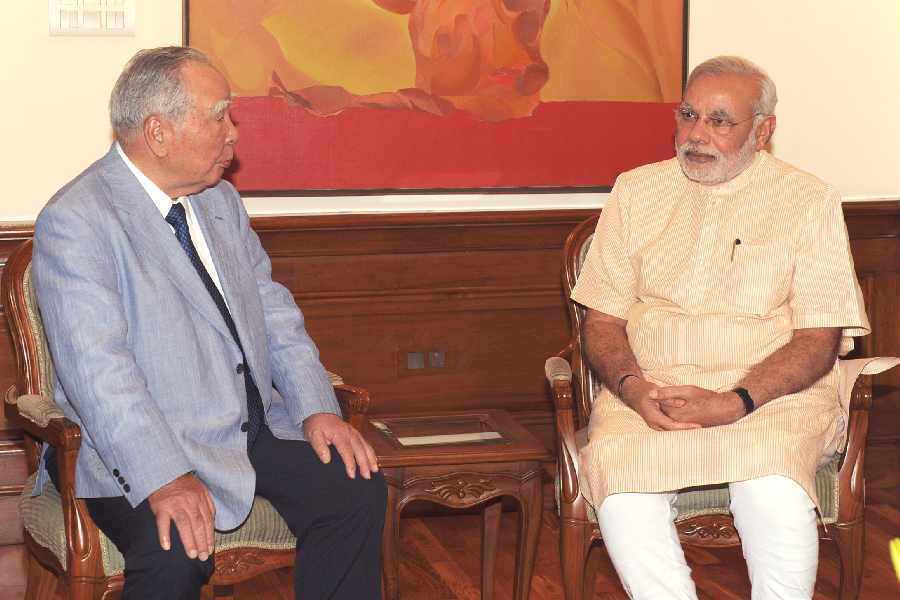Seventeen trees were uprooted in Calcutta and Salt Lake during the thunderstorm early on Monday. Branches of another 31 trees broke and fell on roads in Calcutta. The city has witnessed multiple deaths caused by uprooted trees and broken branches.
Naturalists and landscape architects blamed unplanned plantation and paving the area around the base of the trees with concrete for the frequent toppling of trees. Metro prepares a list of dos and don’ts after speaking to naturalists and town planners.
Do not cement or concrete the area around a tree
A walk along most footpaths of Calcutta reveals that concrete blocks have hardly left any breathing space for trees. In several places, surface roots, too, have been buried under such blocks.
“A tree has two types of roots — one type goes down and the other spreads horizontally. Cementing the immediate surrounding kills the surface roots or do not allow them to grow,” said naturalist Arjan Basu Roy, who works for nature conservation.
“In the absence of well-grown surface roots, a tree has to depend solely on the vertical roots. Such trees become weak because the anchoring is not strong enough and at times fail to withstand gusts of wind.”
Avoid reducing the width of footpaths or median dividers
This winter, the civic body reduced the width of the median divider on a stretch of Gariahat Road (South) near Jodhpur Park by around 2ft. The width of the carriageway has increased but trees on the median divider have become vulnerable to stress.
At Jodhpur Park, at least one tree stands precariously and can topple any moment. Its base has weakened because some of the surface roots were chopped off when the divider was narrowed.
“The condition of this tree is comparable to someone without a leg,” a naturalist said.
A Calcutta Municipal Corporation official said police often requested them to reduce the width of median dividers so the roads could accommodate more vehicles. “In most cases, the need for road expansion wins over tree protection,” the official said.
Another naturalist suggested that trees be transplanted from median dividers to a place where they could grow when expansion of the road became unavoidable.
Take care of roadside trees
Trees by the roadside in Calcutta depend only on rain for water. “Besides water, trees need nutrition. One can add fertilisers or manures to the soil so that the tree can absorb them,” said Mallika Jalan, who runs an NGO that works for conservation of nature.
Even if one wanted to, one could not add manure to the soil because most trees stand amidst concrete. Denied of nutrition over the decades, the trees have weakened.
Plant deep-rooted trees
Most roadside trees in Calcutta are fast-growing ones. “Fast-growing trees create a visual impact but they have shallow roots and their anchoring is not strong,” said landscape architect Anuradha Rathore. The trees that should be planted include Bakul, Kanchan, Kolke, Putranjiva and Kamranga. “All these trees are lightweight and have a good canopy and deep roots,” said Basu Roy.

The surface roots on one side have been chopped off to fit the tree within divider, whose width has recently been reduced. Sanat Kumar Sinha











